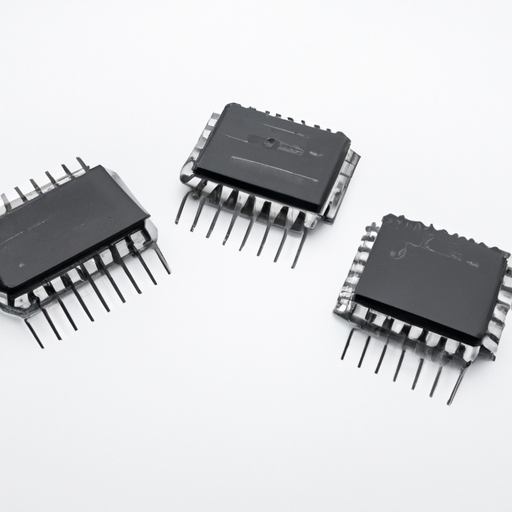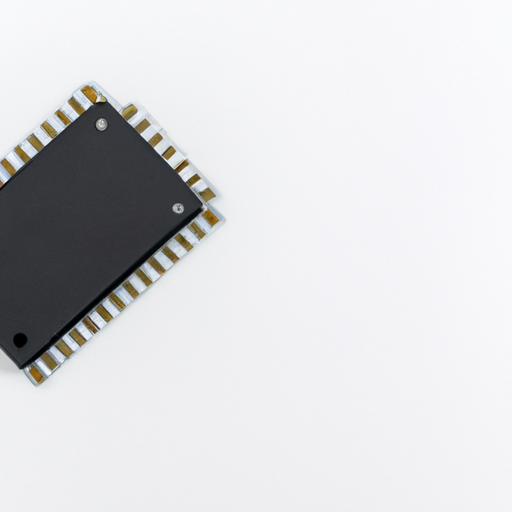
The purchase price of the latest integrated circuit (IC) can vary depending on the specific type and brand of the IC. Integrated circuits are essential components in modern electronics, serving as the building blocks for various devices such as smartphones, computers, and other electronic gadgets. The latest ICs are designed to be more powerful, efficient, and compact than their predecessors, making them highly sought after in the tech industry.One of the most popular and widely used ICs is the microprocessor, which serves as the brain of a computer or smartphone. The latest microprocessors, such as those from Intel or AMD, can cost anywhere from $100 to $1000 or more, depending on the specific model and features. These high-performance processors are designed for demanding tasks such as gaming, video editing, and data processing, making them a crucial component in high-end computers.Another type of IC that is in high demand is the graphics processing unit (GPU), which is responsible for rendering graphics and images on a screen. The latest GPUs from companies like Nvidia and AMD can cost anywhere from $200 to $2000 or more, depending on the model and features. These powerful GPUs are essential for gaming, video editing, and other graphics-intensive tasks, making them a popular choice among gamers and professionals.In addition to microprocessors and GPUs, there are many other types of ICs that are used in various electronic devices. These include memory chips, sensors, amplifiers, and communication ICs, among others. The prices of these ICs can vary widely depending on the specific type and brand, with some costing just a few dollars while others can cost hundreds or even thousands of dollars.Overall, the purchase price of the latest integrated circuit can range from a few dollars to several thousand dollars, depending on the specific type and brand of the IC. These high-performance ICs are essential components in modern electronics, powering everything from smartphones to supercomputers. As technology continues to advance, the demand for the latest ICs will only continue to grow, driving innovation and pushing the boundaries of what is possible in the world of electronics.

Integrated circuits (ICs) are at the heart of modern electronics, powering everything from smartphones and computers to cars and medical devices. These tiny chips are packed with a multitude of features that make them essential components in today's technology-driven world. In this article, we will explore the key product features of integrated circuits and how they contribute to the functionality and performance of electronic devices.1. Miniaturization: One of the most significant features of integrated circuits is their small size. ICs are made up of multiple electronic components, such as transistors, resistors, and capacitors, all packed into a single chip. This miniaturization allows for the creation of complex electronic systems in a compact form factor, making them ideal for portable devices and applications where space is limited.2. High performance: Integrated circuits are designed to deliver high performance in terms of speed, power efficiency, and reliability. The integration of multiple components on a single chip reduces the distance that signals need to travel, resulting in faster processing speeds and lower power consumption. This high performance is essential for demanding applications such as gaming, artificial intelligence, and data processing.3. Versatility: Integrated circuits are incredibly versatile and can be customized to meet the specific requirements of different applications. Manufacturers can design ICs with a wide range of functionalities, such as analog and digital signal processing, wireless communication, and sensor interfacing. This versatility allows for the development of a diverse range of electronic devices, from smartphones and smartwatches to industrial automation systems and medical implants.4. Integration: Integrated circuits enable the integration of multiple functions on a single chip, simplifying the design and manufacturing process of electronic systems. By combining different components on a single IC, designers can reduce the number of external components needed, leading to cost savings, improved reliability, and reduced board space. This integration also allows for the creation of more compact and lightweight devices.5. Scalability: Integrated circuits are highly scalable, meaning that manufacturers can produce ICs with varying levels of complexity and functionality. This scalability allows for the development of custom ICs tailored to specific applications, as well as mass-produced ICs for consumer electronics and other high-volume products. Whether it's a simple logic gate or a complex microprocessor, integrated circuits can be scaled to meet the requirements of any electronic system.6. Reliability: Integrated circuits are known for their high reliability and long lifespan. The manufacturing process of ICs involves rigorous testing and quality control measures to ensure that each chip meets the required specifications. This attention to detail results in ICs that are highly resistant to environmental factors such as temperature, humidity, and vibration, making them suitable for a wide range of operating conditions.7. Cost-effectiveness: Integrated circuits offer a cost-effective solution for electronic system design, as they eliminate the need for multiple discrete components and reduce the overall bill of materials. By integrating multiple functions on a single chip, manufacturers can achieve economies of scale and lower production costs. This cost-effectiveness makes ICs an attractive option for a wide range of applications, from consumer electronics to industrial automation.In conclusion, integrated circuits are essential components in modern electronics, offering a wide range of product features that contribute to their performance, versatility, and reliability. From miniaturization and high performance to scalability and cost-effectiveness, ICs play a crucial role in powering the electronic devices that have become indispensable in our daily lives. As technology continues to advance, integrated circuits will continue to evolve, driving innovation and shaping the future of electronics.

Inductors are essential components in electronic circuits, used to store and release energy in the form of a magnetic field. They are commonly found in a wide range of devices, from power supplies and transformers to radios and televisions. The production process for inductors involves several key steps, each of which is crucial to ensuring the quality and performance of the final product.The mainstream inductor production process typically begins with the selection of materials. The core material used in inductors is usually a ferromagnetic material such as iron, ferrite, or powdered iron. The choice of core material depends on the specific requirements of the inductor, such as the desired inductance value, frequency range, and operating temperature. The core material is typically in the form of a rod, toroid, or E-core, depending on the design of the inductor.Once the core material has been selected, the next step in the production process is to wind the wire around the core to create the coil. The wire used in inductors is typically made of copper or aluminum, as these materials have low resistance and high conductivity, which are important for minimizing energy losses in the inductor. The wire is wound around the core in a specific pattern and number of turns, determined by the desired inductance value and other design parameters.After the coil has been wound, the next step in the production process is to encapsulate the inductor in a protective casing. This casing is typically made of a non-conductive material such as plastic or epoxy, which helps to protect the inductor from environmental factors such as moisture, dust, and temperature fluctuations. The casing also helps to provide mechanical support for the inductor, ensuring that it remains stable and secure in the final product.Once the inductor has been encapsulated, it undergoes a series of tests to ensure that it meets the required specifications and performance criteria. These tests may include measuring the inductance value, resistance, and frequency response of the inductor, as well as checking for any defects or inconsistencies in the winding or casing. Any inductors that fail these tests are typically rejected and either repaired or discarded, depending on the nature of the defect.Finally, once the inductors have passed all of the required tests, they are ready for packaging and distribution to customers. In some cases, inductors may be further assembled into larger components or systems, such as power supplies or filters, before being shipped to customers. The packaging of inductors is typically done in a way that protects them from damage during shipping and handling, ensuring that they arrive at their destination in good condition.Overall, the mainstream inductor production process is a complex and multi-step process that requires careful attention to detail and quality control. By following these steps and ensuring that each inductor meets the required specifications and performance criteria, manufacturers can produce high-quality inductors that meet the needs of their customers and perform reliably in a wide range of electronic devices.

Monitors are an essential component of any computer setup, whether it be for work, gaming, or entertainment purposes. They are the primary interface through which users interact with their computers, displaying images, videos, and text in a clear and readable format. In this article, we will explore what monitors are, how they work, and the different types available on the market today.What is a monitor?A monitor, also known as a display screen or screen, is an electronic device that visually displays information generated by a computer. It consists of a screen that emits light to create images and text that can be viewed by the user. Monitors come in various sizes, resolutions, and technologies, each offering different features and benefits.How do monitors work?Monitors work by receiving signals from the computer's graphics card and converting them into images that are displayed on the screen. The graphics card sends signals to the monitor in the form of electrical impulses, which are then translated into pixels on the screen. These pixels are tiny dots that make up the images and text displayed on the monitor.Monitors use different technologies to create images, with the most common being LCD (Liquid Crystal Display) and LED (Light Emitting Diode) displays. LCD monitors use liquid crystals to create images, while LED monitors use light-emitting diodes to illuminate the screen. Both technologies offer high-quality images and are energy-efficient, making them popular choices for modern monitors.Types of monitorsThere are several types of monitors available on the market, each offering different features and benefits. Some of the most common types include:1. Standard monitors: Standard monitors are the most basic type of monitor and are typically used for everyday computing tasks such as web browsing, word processing, and email. They come in various sizes and resolutions, with larger screens offering more screen real estate for multitasking.2. Gaming monitors: Gaming monitors are designed specifically for gaming enthusiasts and offer features such as high refresh rates, low response times, and adaptive sync technologies. These monitors provide a smooth and immersive gaming experience, with crisp and clear images that enhance gameplay.3. Ultrawide monitors: Ultrawide monitors have a wider aspect ratio than standard monitors, providing more screen space for multitasking and immersive gaming experiences. They are ideal for users who need to work on multiple windows simultaneously or want to enjoy a cinematic gaming experience.4. Curved monitors: Curved monitors have a curved screen that wraps around the user's field of view, providing a more immersive viewing experience. They are designed to reduce eye strain and improve viewing angles, making them ideal for users who spend long hours in front of the screen.5. 4K monitors: 4K monitors have a resolution of 3840 x 2160 pixels, providing four times the resolution of Full HD monitors. They offer incredibly sharp and detailed images, making them ideal for professionals who work with high-resolution content such as photographers, videographers, and graphic designers.ConclusionMonitors are an essential component of any computer setup, providing users with a visual interface to interact with their computers. They come in various sizes, resolutions, and technologies, each offering different features and benefits. Whether you are a casual user, a gaming enthusiast, or a professional, there is a monitor available to suit your needs and preferences. So, next time you are in the market for a new monitor, consider the different types available and choose one that best fits your requirements.




